Addis Ababa, Youthful Home to the Oldest Human Fossils
“Your flight already departed an hour ago”, greeted an Ethiopian Airlines agent when I landed at Addis Ababa airport from my short flight from Dubai. This was to be my connection to Lalibela, one of the Crown Jewels of Ethiopia for their rock-hewn churches from 12th century.
What I remember the most from my short trip to Ethiopia is the people I came across at every corner – how friendly and helpful everyone was. Back at the airline desk, the agent tried to reassure my worried self by offering to book me on a flight next morning, give me a hotel in Addis for the day, and help me rearrange my reservations in Lalibela. “Would they really do that all?” I wondered. In next two hours, not only the friendly agent booked me a hotel room, but also a shuttle to the hotel, and gave me contact information of a guide to show me around the city. Soon I hit the roads of Addis Ababa.
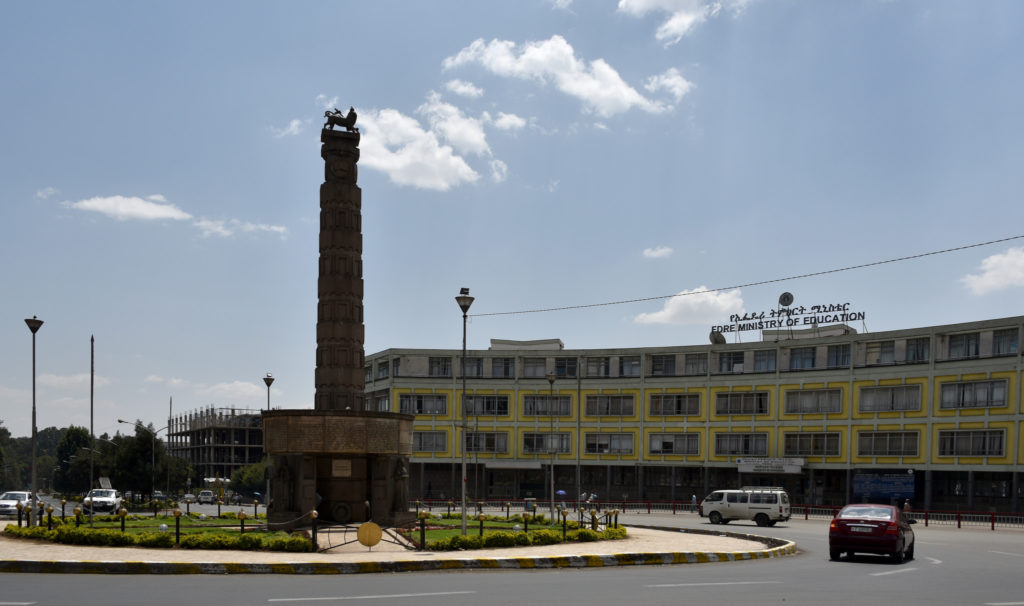
Addis Ababa: First Impressions
Addis Ababa, the youthful capital of Ethiopia, is fondly called just Addis by the locals. The name, which means “New Flower” in the Amharic language, finds its origins with the empress who visited here in late 1800s and spotted a unique flower. Her grandson ended up founding this city. The life in Addis is lived outdoors, as you see people going about their daily life everywhere – be in the cafes, markets or generally hanging out.

The sprawling city has a unique personality of its own with the congestion and constant honking traffic in the center, and the peace and calm in the rolling hills surrounding it. I was told the views of the city are amazing from up top of Mount Entoto, so that’s where we were headed first.
Going up the Entoto
We left the hustle and bustle of the city behind as we started to drive up to the Mount Entoto. On the way, I saw lots of men and women carrying large loads of wood they collected from the forest up there for their use as construction material and firewood.

They all carry food with them in this typical lunch box that I found to be fascinating. Of course when I think about the Ethiopian bread, Injera, and its large round size, this design makes perfect sense.
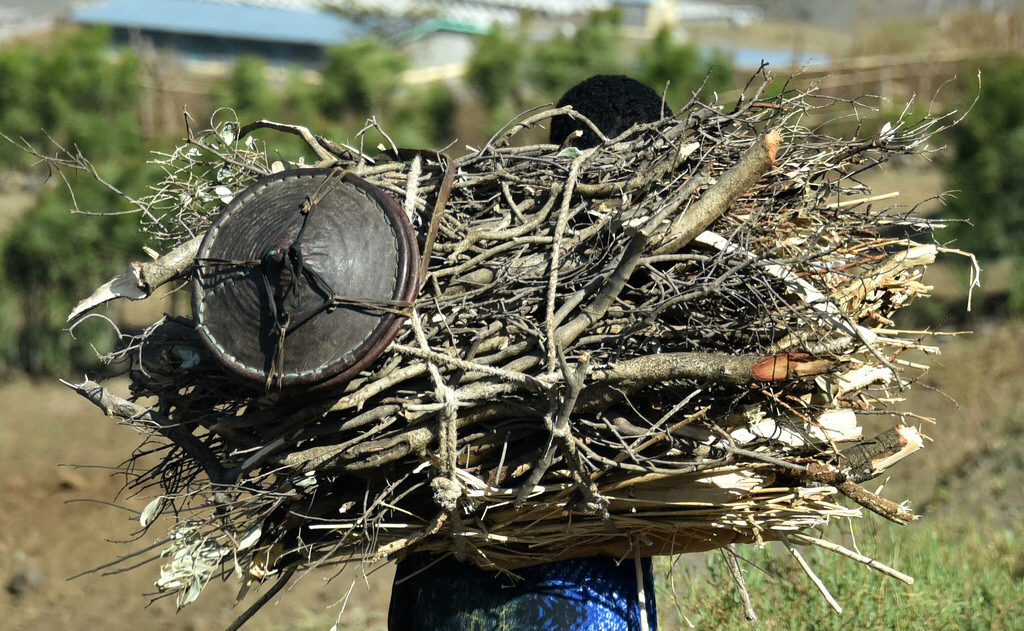
As we approached the top, there were many spots to stop and admire the views of Addis. The cool crisp air hitting the Eucalyptus trees lining the road was giving away a distinct fragrance. On this clear day, the view from the top were far reaching and quite rewarding.
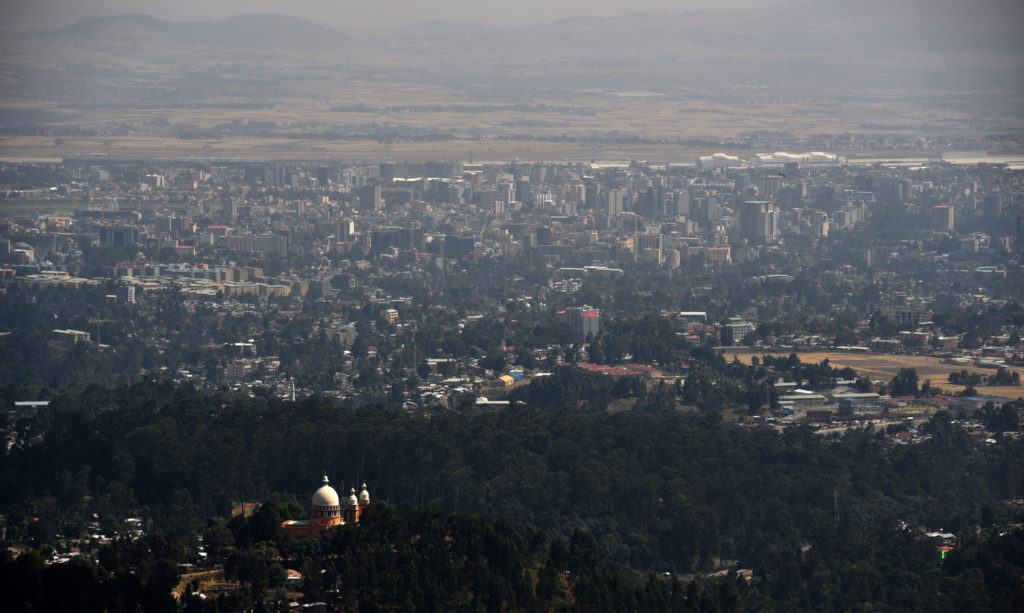
As we headed down, we made a quick stop under a tree with unobstructed views for a quick bite and met this young mother making a living by selling small handicrafts to the visitors while carrying her daughter on her back.
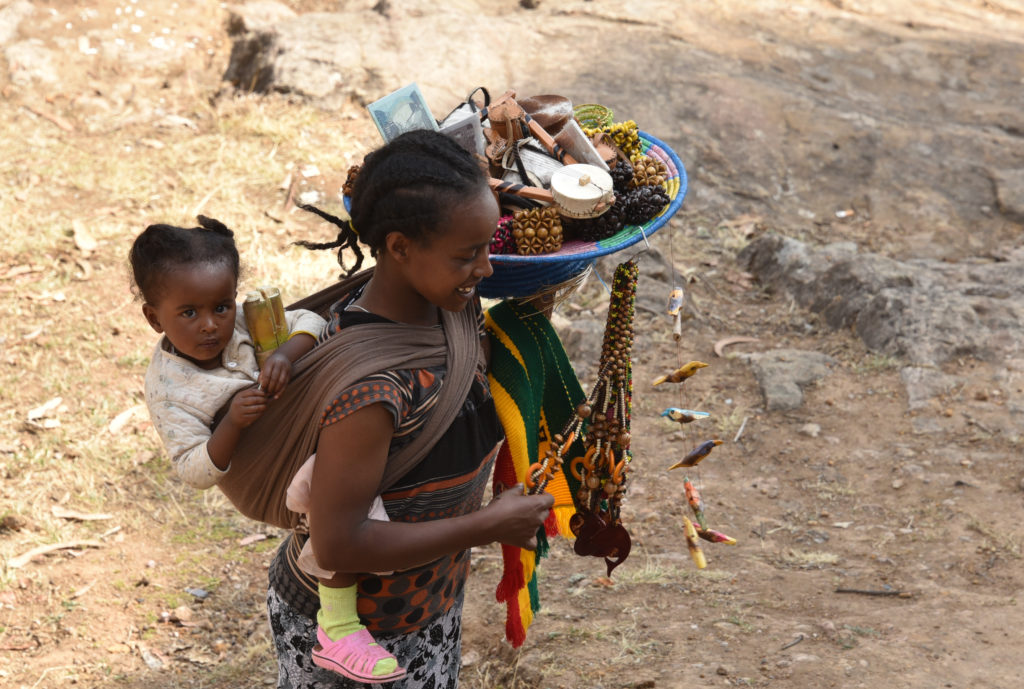
Addis is also the site of the African Union (AU) headquarters. Since I had no business at AU, we weren’t allowed to go inside. We did a quick drive by the AU parliament building, an impressive modern architecture that stands out in contrast to its surroundings.
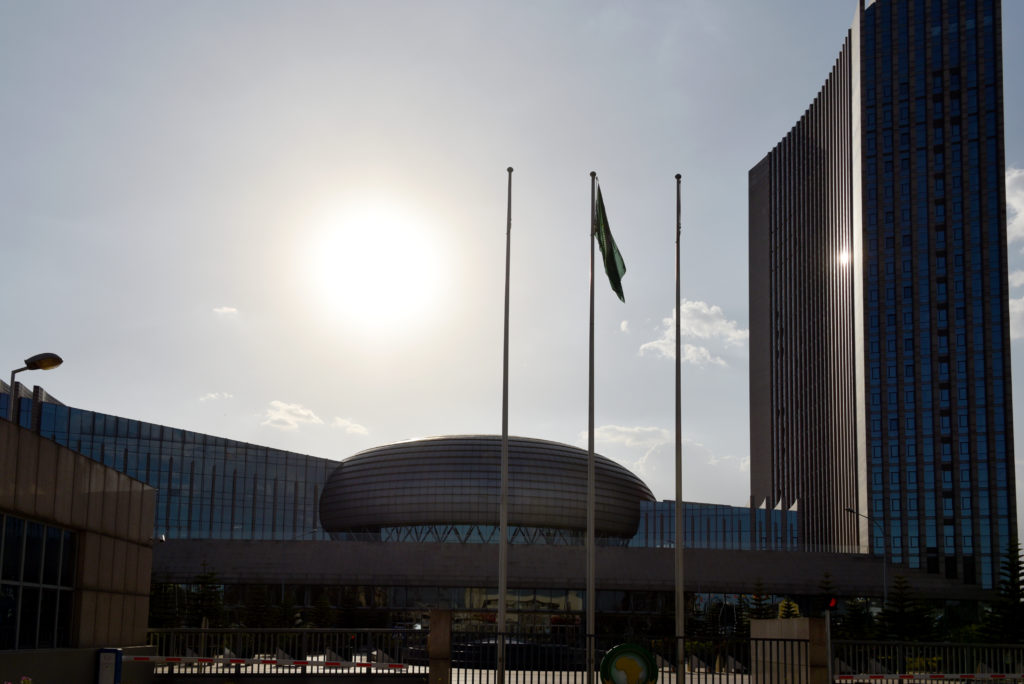
National Museum in Addis Ababa
As made our way to see the National Museum of Ethiopia, our driver pointed to the American Embassy when we were passing by it. With my camera instincts, I just rolled down the window and took a few pictures. Little I knew it was a big mistake. We soon found the embassy security chasing us, asking us to turn around and drive back to the Embassy. The security staff started to mellow down once they learnt I was an American; nonetheless, they took down all my details and carefully looked through my camera and deleted all the embassy photos. Later I found out that there was a sign posted some 50 meters before the compound advising not to take any photos of the Embassy.
At the National Museum, it was a very moving experience being face to face with the 3.2 million-year-old fossils of our human ancestor, Dinkinesh, or known as Lucy in the western world.
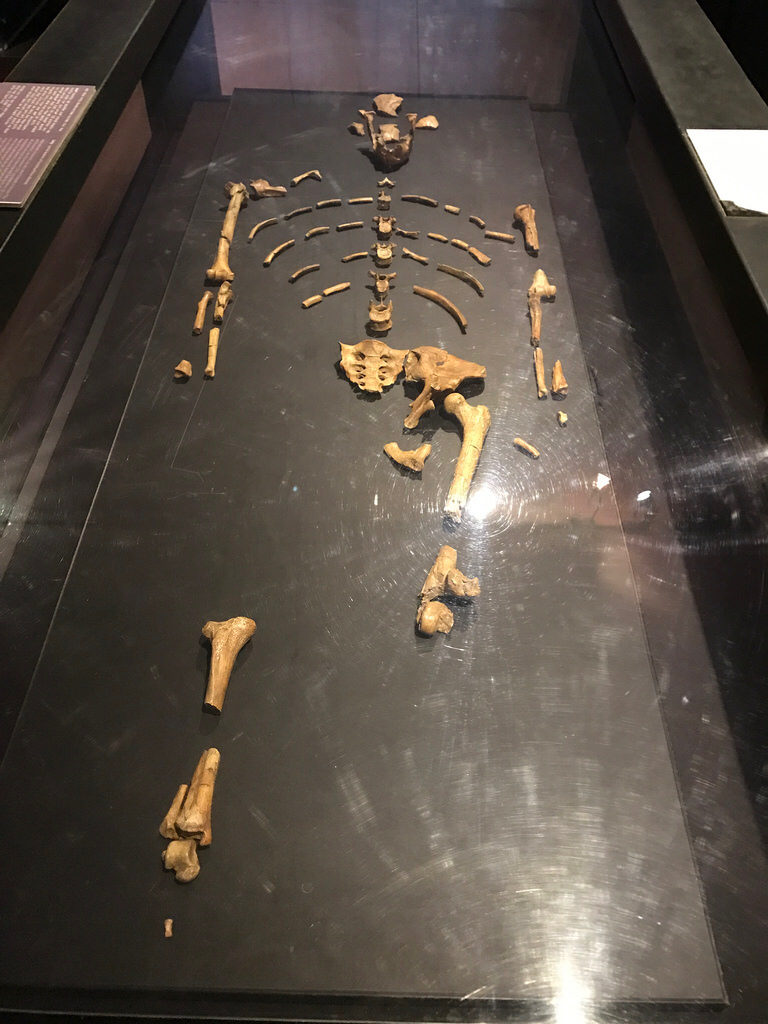
The museum is quite chaotic with lots of interesting artifacts dispersed over building’s floors. My museum guide reminded me that no matter which country you are from, you are essentially descendant of an Ethiopian. I found that fascinating because there was no such thing as Ethiopia, or any other country for that matter, 3.2 million years ago. However, I do understand Ethiopians taking pride in being home to the most ancient artifacts of human history.
My next stop was the Ethnological museum, which is housed in a former palace and is surrounded by beautiful Addis Ababa University gardens. Since the museum was closed, I just opted for a quiet stroll around the university campus.
Holy Trinity Cathedral
Holy Trinity Cathedral, the highest-ranking Ethiopian Orthodox cathedral in Addis, is an interesting site to visit. It is massive and ornate and is one of the major attractions in the city for cultural, religious and historical reasons.
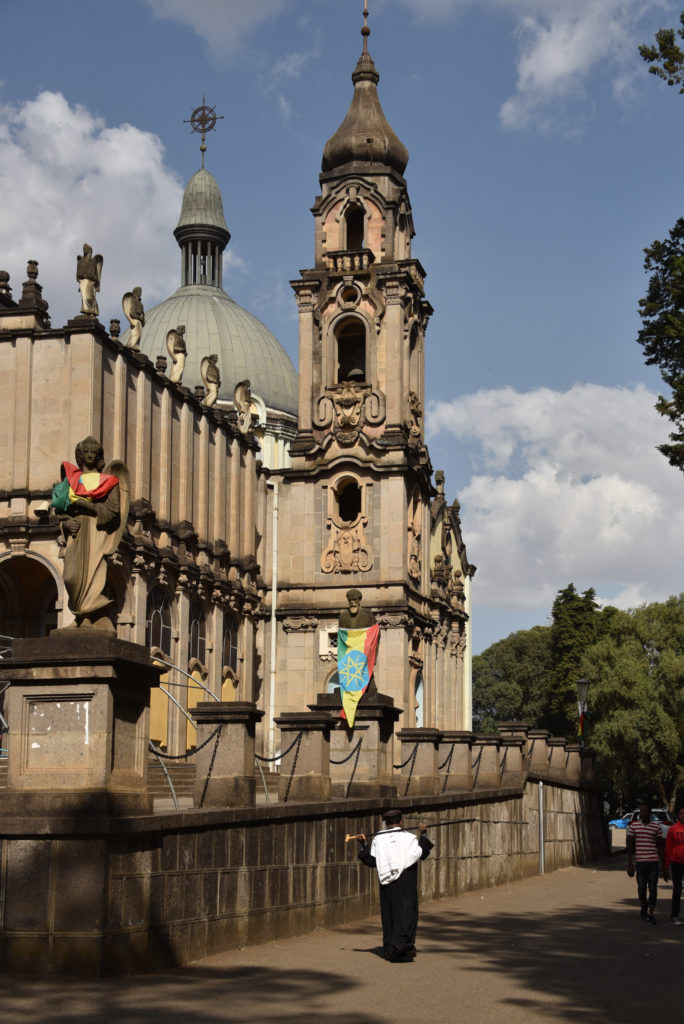
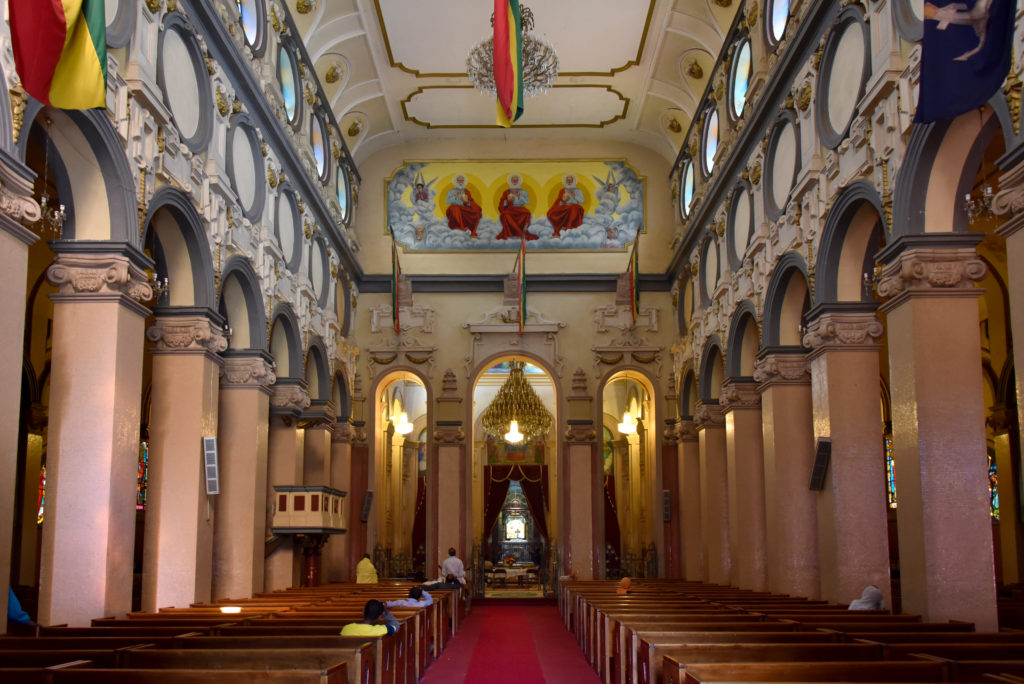
The church is also the Emperor Haile Selassie and his wife Empress Menen Asfaw’s final resting site. You can find their massive granite tombs there. There is also a small museum in the back with some eclectic artifacts. The grounds of the cathedral are also graveyard for many of patriots who fought the Italian occupation.
The Mercato: Africa’s Largest Open Air Market
Chaos and the hustle of Africa’s largest open air market goes on for kilometers. You can buy anything you can imagine – food stuff, crafts, clothing, housewares, spare parts, you name it. The market is structured in sections, each focused on certain things to create some order in the chaos.
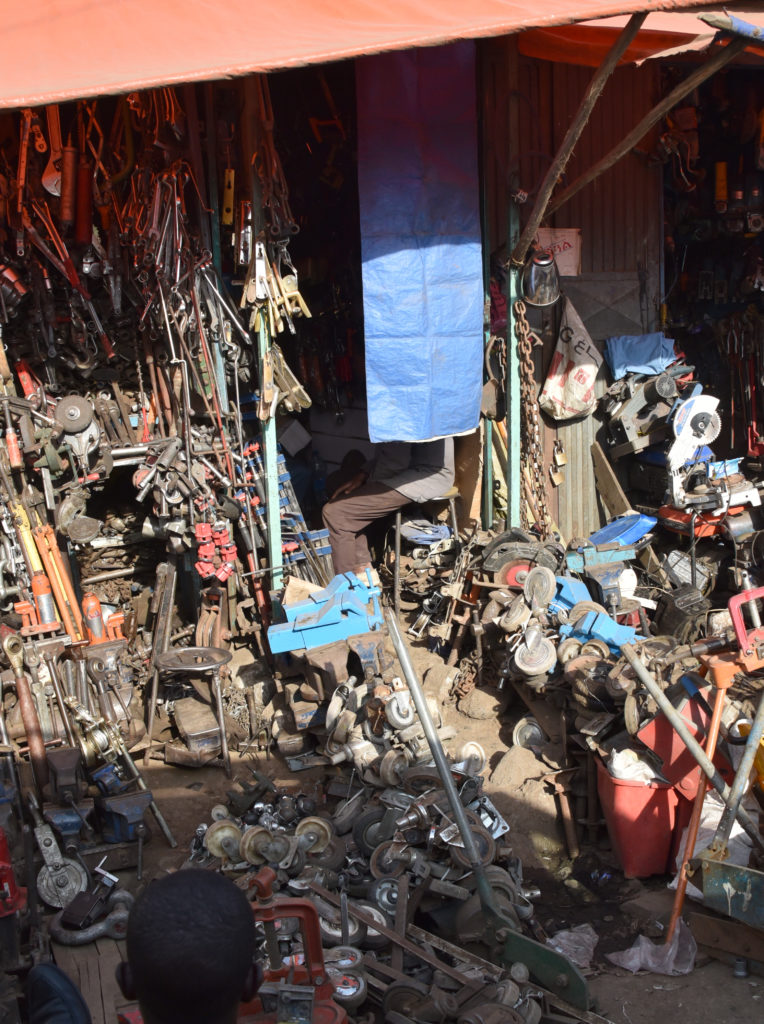
Most people are on foot in the market, so driving around is really inching along at the speed of pedestrians. The roads are always full with hawkers, shoppers and vehicles of all sorts, with everyone trying to go about their business. The preferred mode of transportation is primarily humans who carry loads on their heads. Then come the donkeys, small pick up trucks and the lorries.

And if you are tired, there is always a roadside vendor selling snacks or coffee.
Coffee
It’s impossible to separate Ethiopian cultural identity from the finest Arabica coffee this land offers. In one of the oldest cafes we visited, there was a story of the Ethiopian coffee legend displayed on the wall. According to the legend, the coffee was discovered by an Ethiopian shepherd boy and his goats sometime around the sixth century.

Addis is really a city of cafes, traditional coffee stalls in bars and restaurants, and women walking around streets with warm flasks dispensing high-quality coffee. One can’t walk very far without the pervasive smell of coffee hitting.

With the smell of the coffee and Addis’ people in my heart, I left for Lalibela.
You may also like

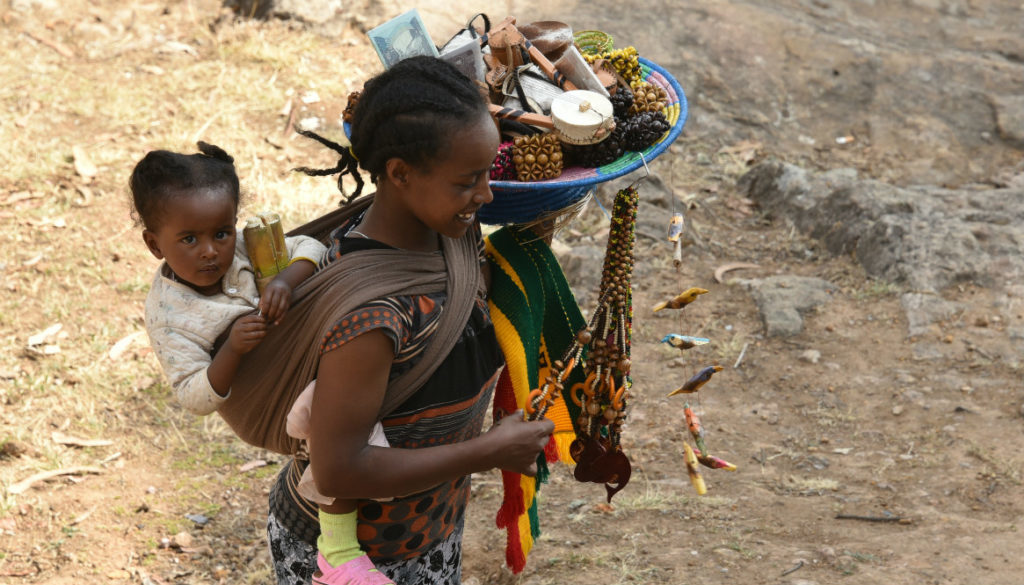


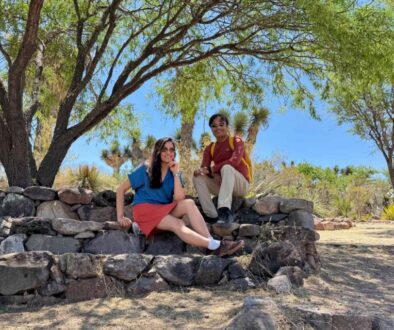

Sabina
March 9, 2018 @ 10:26 pm
Thank you for sharing this info, I found this post really interesting. I’ll keep checking your blog ?
Freeoversea
March 20, 2018 @ 7:53 am
Africa is in our dreams for a long time, by reading and seeing these photos you made us travel along with you 😀 Thanks for sharing guys, amazing blog!
xx
Patricia & Miguel
http://www.freeoversea.com
Jyoti
March 20, 2018 @ 9:35 pm
Patricia & Miguel, Africa is amazing! So much wildlife, culture and history. I’m glad you enjoyed the trip with us.